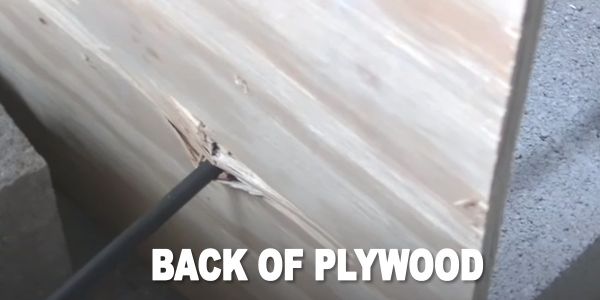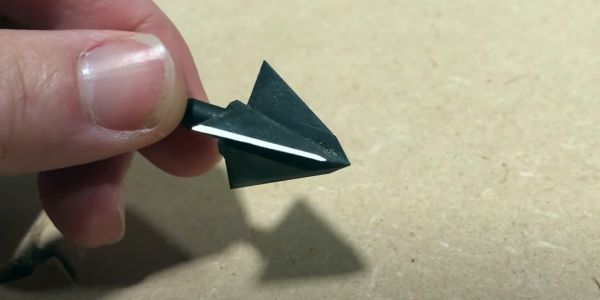In this review, I tested a mechanical called the G5 DeadMeat broadheads.
Right off the bat, I was very impressed by the design. First of all, it’s a 3-blade head and it has a cutting diameter (when blades are fully depoloyed) of 1 and 1/2 inches, which is nice.
That cutting diameter is perfect for whitetail deer, turkey, smaller hogs, and so forth.
I’m typically a fixed blade guy, but I’m constantly looking at the latest and greatest broadheads, and always willing to try some new mechanicals.
The G5 Deadmeat broadhead at first glance

I like the configuration of the blades on this head. As you can see, it’s really stout. It has a super short profile, and when the blades are in the closed position, it’s very small.

This is the G5 DeadMeat in the deployed position.
Flight
These heads fly incredibly well. They come with a ballistic match point which looks just like the regular head’s shape that’s basically a practice head. It flies just like the regular head would fly.
They are also extremely forgiving. Now, I realize that a lot of heads fly very well. My bow is really well-tuned. I can pop balloons with fixed blades out to a 100 yards, but this is on the extra forgiving side for sure. So, I love that.
-

N1 Outdoors® Stain The Vanes™ Bowhunting Tee
Price range: $24.99 through $30.99 Select options This product has multiple variants. The options may be chosen on the product page -
Sale!

Just Pass’N Through™ Tee (featuring Magnus Black Hornet Ser-Razor Broadhead)
$15.00 Select options This product has multiple variants. The options may be chosen on the product page -
Sale!

N1 Outdoors® Bowhunt Oh Yeah™ Bowhunting Tee
Original price was: $26.99.$9.00Current price is: $9.00. Select options This product has multiple variants. The options may be chosen on the product page
Head Construction
On the downside, I don’t like that it’s just a metal injection molding. I’m not a huge fan of that. It’s still good, and it’s better than a lot of aluminum heads, but it’s not as good as machined heads (of course, it would cost a lot more if it were a machined).
However, it is still a solid steel and it has a two-piece ferrule. It is a few different composite pieces of steel, but it is, in essence, 100% steel.

The DeadMeat also has a cool retaining clip that is replaceable, which allows the blades to lock in place. When they lock in place, they make a little snap sound. I like this much more than a rubber band. I also like it more than the retaining clip that Rage uses, where you’re hoping it’s really in there, but it doesn’t have that little dimple to lock it in place. This blade should not come apart when they’re bumped and they shouldn’t come apart in flight at all. I also like that it’s also a solid steel construction. That’s a big plus. Everything is steel.
In the first test, I shot the DeadMeat through a 3/8” piece of plywood. This is my favorite thing to do with mechanical broadheads, so that I can see how well they deploy upon entrance. It also helps me see how well they penetrate and hold up to the plywood. In many ways, it’s similar in consistency to bone.
If they don’t hold up to plywood then I’m not going to be hunting with them for sure.
So let’s see what happened with the DeadMeat in the 3/8-inch plywood.
In the testing, I used a footed Hexx 330 arrow with a total weight of 500 grains and I shot it out of a Hoyt Carbon Spyder 30 at 73 lbs.
Plywood penetration test
After shooting into the plywood, the blades were not near as sharp. So, they dulled significantly such as metal injection molded blades will often do.

The blades fully deployed on impact. However, while two of them deployed all the way, one did not have deployed quite as much. That’s interesting. Maybe because it was going with the grain of the plywood.

On the other side of the plywood, you can see it certainly made a nice hole. Penetration was very good.

Although the blades dulled after the plywood test, they did, however, hold up remarkably well. The only problems was that one of the blades had a little bit of a bend to it.
Something to watch for
I have known someone who had one of the three heads in his pack that had blades that would not deploy at all. Upon further inspection, he found that there is a groove that the blades slide up and down in.
This groove can contain small burrs, which is what was preventing his blades from opening. He talked to G5 about it, and of course, they replaced them. But, that would be something to test before you shoot them to be sure the blades are sliding and opening effectively.
-

N1 Outdoors® N-Tune™ Nock Tuning Reflective Arrow Wraps – Meat Reaper™
Price range: $18.99 through $27.99 Select options This product has multiple variants. The options may be chosen on the product page -

N1 Outdoors® N-Tune™ Nock Tuning Reflective Arrow Wraps – Sharkey™
Price range: $18.99 through $27.99 Select options This product has multiple variants. The options may be chosen on the product page -

N1 Outdoors® N-Tune™ Nock Tuning Reflective Arrow Wraps – Grip-N-R.I.P.™
Price range: $18.99 through $27.99 Select options This product has multiple variants. The options may be chosen on the product page
G5 Deadmeat Broadheads | Final Thoughts
These heads have good durability. I’m impressed with that. They have a really good cutting diameter size for a 3-blade and it will really make a nice hole.
In addition, flight is extremely good. You should always have a well-tuned bow. But, this head would be extremely forgiving, even with a bow that is not optimally tuned.

The only thing that is a little concerning is the blade angle. You can see here that it is really steep when the blades are fully deployed; it’s almost horizontal. Because of that, it won’t get as good of penetration as if the blade angle were more streamlined. Although that is somewhat of a concern, I don’t believe it would be a problem at all with deer, smaller hogs, or turkeys. So, if that’s what you are hunting, I think this could be a winner of a broadhead.
While this head would not be my first choice on an elk (those bones can be really tough, and I would want to be sure to use a fixed blade head on an animal like that), I’m sure it would take an elk if you hit it in the right place.
But, it would be great for hunting whitetail deer, turkey and small hogs.
Overall, I give this head a thumbs-up.




















































